Right before my last semester of college, I decided to drive the long way to campus by myself. It was about a seven-hour drive, but they were all long, calm country roads dotted with plenty of rest stops. It was supposed to flurry a little as I passed through Syracuse, but I wasn’t worried. My college campus was near Rochester, so I was used to driving in snow.
Somehow, the flurry turned into a full-on whiteout. It was the strongest blizzard I’d ever seen, turning day into night, and I was driving through it. Driving in snow can be easy when you’re going along plowed roads through a picturesque winter wonderland. It’s a completely different story when you’re going through a snow globe that’s been tossed in a blender.
The most important thing to know about driving in snow is knowing when to stop. I kept driving through horrific conditions because I was afraid to miss the first day of the semester. After I passed an 18-wheeler lying on its side in the median, I decided that I valued my life a little bit more than I valued English class. I was able to pull off the road and find a hotel where I stayed for the next two days (it was a BIG storm). Sure, I was bored. But more importantly, I was safe.
Make sure you’re safe the next time you have to drive in the snow with these tips from AAA.
Preparing to Drive in Snow
Before you head off on a long winter drive, watch the weather forecasts carefully. If you can avoid driving in snow, you should. Make sure other people know your route, your destination and your ETA.
Keep snow supplies in your car, including a collapsible shovel, an ice scraper and a window broom. Bring your phone and a charger with you, and make sure to download the AAA Mobile App. In case of emergency, keep blankets, gloves, hats, water, necessary medications and nonperishable food items on hand.
Click here for a full list of winter driving kit necessities.
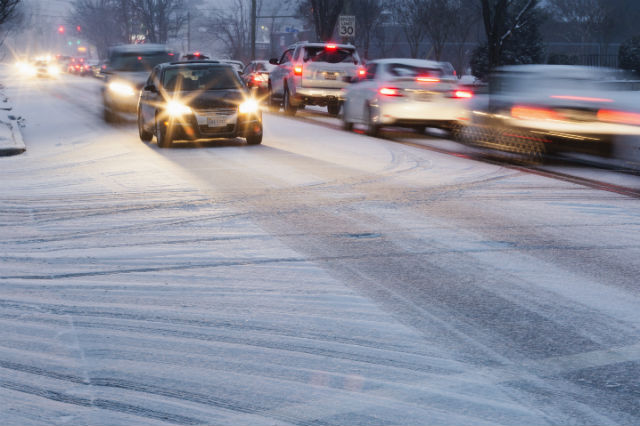
AAA’s Tips for Driving in Snow
- Do not use cruise control when driving in ice or snow – it’s important that you stay alert and are able to control your speed at all times.
- Go slow! It’s easier to control your vehicle when you’re driving at a slow pace, so accelerate and decelerate as slowly as you can to regain traction on the road and avoid skidding off-course.
- If possible, maintain eight or 10 seconds of distance between you and the car in front of you. It’s harder to stop in the ice and snow.
- The best way to stop while driving in snow is by threshold braking. It’s not just for race car drivers! Plant the heel of your braking foot on the floor, and with the ball of your foot apply firm, steady pressure to the brake.
- In heavy snow, don’t come to a complete stop if you don’t have to. Moving again from a full stop during a blizzard can be difficult and dangerous.
- Try to drive in the tracks of the car in front of you – it will make it easier to control your vehicle.
- Be patient with the other drivers on the road. This is a stressful situation for everyone, but it’s important to remain calm.
When to Stop
Sometimes, the snow is so unrelenting that you have to stop. Maybe you keep skidding or it becomes too hard to see. Maybe you’re not even sure where the road is anymore.
Stopping could mean having to shelter in your car. In this situation, do not wander away from the car – you might not be able to find it when you return (and it’s best to conserve your warmth and energy, anyway).
Attach a colorful sash, handkerchief or scarf to your antenna, side mirror or window. It will flutter in the wind and alert any emergency services to the location of your vehicle. Don’t use white fabric – it will blend in with the snow. You can also turn your car’s interior lights on if it gets dark outside. This doesn’t sap much energy from your car’s battery, and it can help emergency services find you.
You may choose to keep your car running so that you can make use of the heating system. Don’t overuse it, though. You want to save your gasoline. If you turn your engine on, make sure your exhaust pipe is kept clear. If it gets backed up with snow, you could risk carbon monoxide poisoning (and potentially death).
Insulate your body heat with anything you have on hand, from emergency blankets to crumpled-up newspapers to floor mats.
When you’re driving in snow – serious snow, like a blizzard or a snowstorm – you need to remain calm and make smart, safe decisions. By remembering these tips and preparing your car with emergency utilities, you can navigate a sudden blizzard without making snap decisions based on panic.
Winter driving is difficult for all motorists, but particularly so for new and improving drivers. Learn to become a lifelong safe driver – under all conditions – at AAA Driving School or through AAA’s Defensive Driving course.
Do you have any tips for driving safe during a snowstorm? Share them with us in the comments below.
11 Thoughts on “When You’re Caught in a Blizzard: Tips for Driving in Snow”
Leave A Comment
Comments are subject to moderation and may or may not be published at the editor’s discretion. Only comments that are relevant to the article and add value to the Your AAA community will be considered. Comments may be edited for clarity and length.



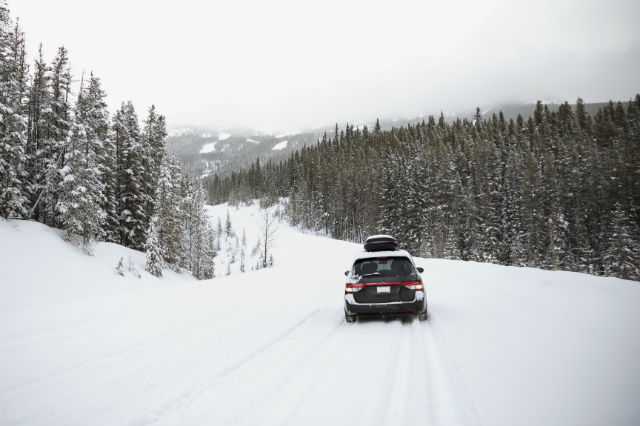

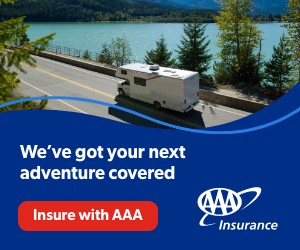

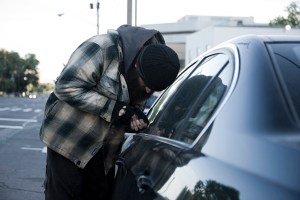
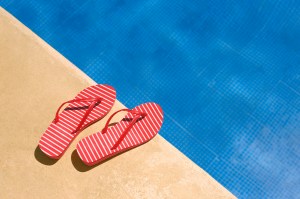
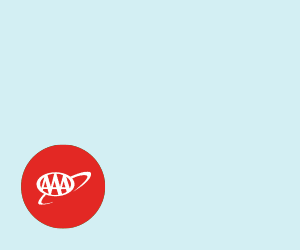







I have learned when driving in snow and you find it necessary to come to a complete stop, put the transmission in neutral and then start braking slowly. That way there is no pull on the engine and you will avoid skidding forward.
About 10 years ago we were driving home to Massachusetts from Virginia Beach after visiting family for the Holidays. We encountered the worst snowstorm ever on the NJ Turnpike. The plows could not keep up with the snowfall. Cars and large trucks were disabled/stuck in snow, blocking the exits/ stuck in the rest areas. Because of the snow and disabled vehicles we could NOT exit the turnpike. We had counted 144 vehicles stuck in drifts when we stopped counting. We got lucky at the rest area just before the GW Bridge and were able to fill the tank with gas and use the restroom. We all got deicer (as a joke) in our Xmas stockings. We used 3 cans of deicer on that drive. The windshield kept freezing up with snow & the wipers couldn’t keep up. We made it to the GW bridge and then all traffic was stopped.Turns out we didn’t get going again for around 8 hours (1am-9am). Cars around us ran out of gas. We used 1/4 tank of gasoline ourselves just to keep warm. I recommend keeping your tank full (you never know when you will get stuck); have more than 1 can of deicer; install winter windsheild wipers; if you have a choice use LOCAL not express lane on a bridge (local was not stopped;express was); have snacks & water & blankets in the car and at the 1st sign of trouble get off the highway before the exits get blocked. We made it home & learned a lot from the experience. My adult son did an excellent job of both driving and keeping us (his wife, his mother-in-law and me) safe.
Wow, what an experience! Thank you for sharing your story and tips, Donna.
Carry any pair of tire chains to lay on the ground and a shovel to jam them under the tires in place of sand
We left a friend’s house one evening not realizing how bad the snow was. We were only about 45 minutes from home and about 30 minutes of that was highway. It was difficult seeing while driving on the highway with the snow blowing all around and it was bad enough that we couldn’t see where the side of the road ended. The plows were just starting to come out. We drove very slowly and people were passing us but I noticed many were driving without their headlights on. There were lights on the highway. I thought that was odd but when I saw a state trooper drive by with no headlights, we decided to try that. It was much easier to see in front of us with the headlights off! I guess the headlights just produced a glare on the flying snow.
In very bad snow, put your car in first gear ,but remember not to drive more than 20 mph! On a highway follow the tire tracks and put your car in 2nd gear ,which usually allows you to drive between 20 mph and up to 40 mph! This helps a lot ! If you are driving on local streets that you know ,avoid hills ,even if you have to go a longer distance .Intersections, highway ramps, and bridges ice up the most, so proceed with more caution and leave more space between other cars! If you hit ice and skid, turn in the direction of the skid !
Following the tire tracks has especially gotten me through a lot of sticky situations! Thanks for reading, Phillip.
-Sarah
These are excellent tips. Having grown up in the Midwest and lived most of my life in the Northeast I am quite familiar with snow storms. The worst storm I was caught in as a driver involved a bunch of parents of middle schoolers coming back from a competition at an upstate NY college. We defied the weather reports so our kids could stay and compete. Returning home we were caught but good. But we were a caravan and could help each other. We made it to a motel where we spent the night. My advice is (1) watch the weather and don’t drive in snow storms, and (2) if you start out on a trip where there is any chance of getting caught in bad weather, don’t drive alone; make sure there are other cars in your caravan.
Put the car in low gear. it’s tremendously helpful.
Best advice for driving in snow – stay home.
Two years ago I was caught in a white-out while driving on the Ring Road in Iceland. The area I was in was mountainous, snowing, windy, cold, could barely see the end of the hood. I wanted to just stop, however, it was so windy that with my foot on the brake, the wind was SO STRONG it was pushing the SUV. I had absolutely no control of the vehicle. As luck would have it all worked out OK. My tip is, in a situation like this, OPEN THE WINDOWS. It will keep your vehicle from becoming a sail boat. I remember driving cross-country in 1972 and driving over the San Bernardino Mountains there were signs advising to open your windows during high wind advisory. I wish I had remembered this in Iceland.